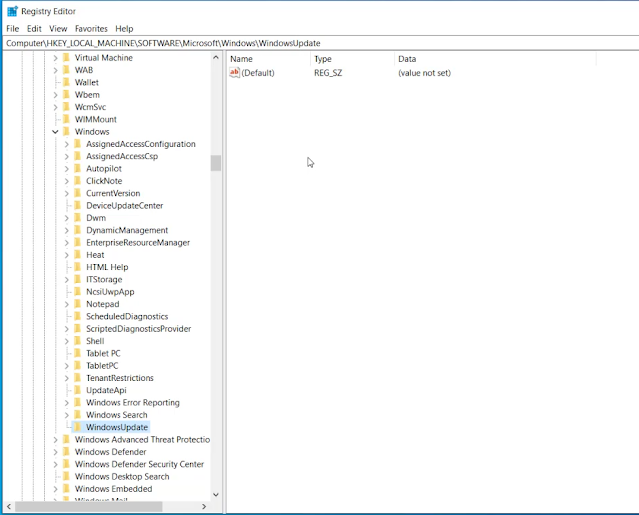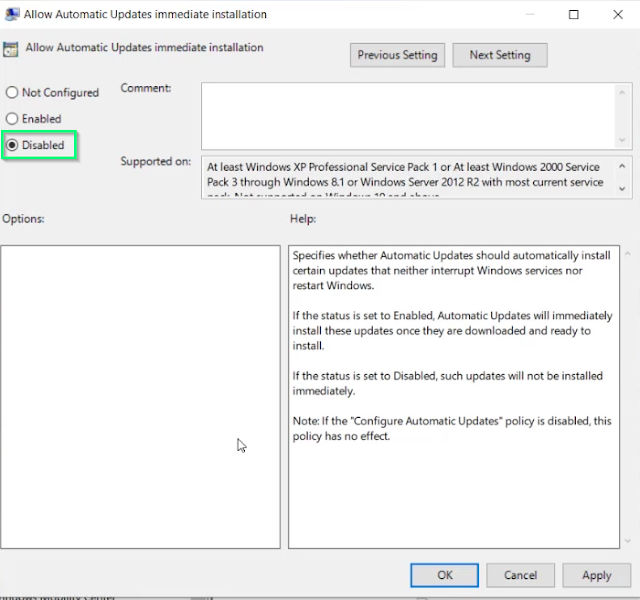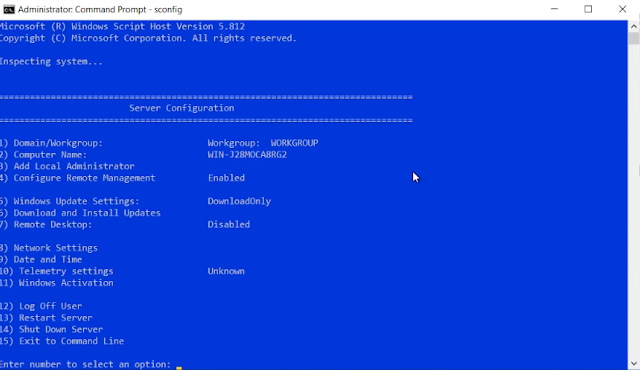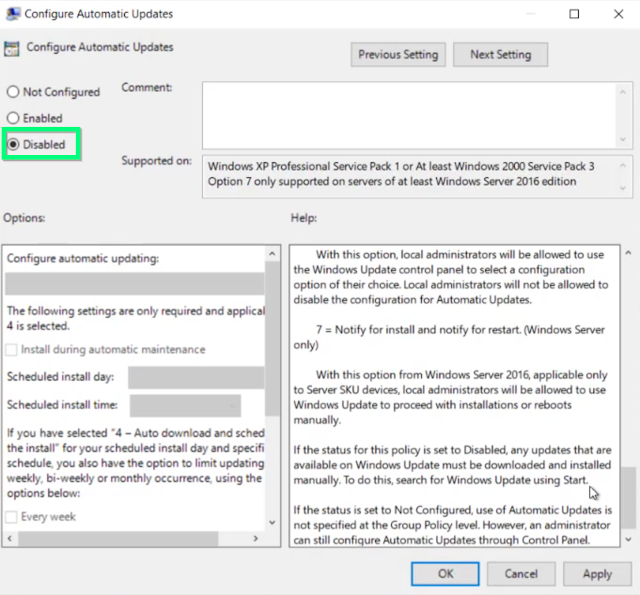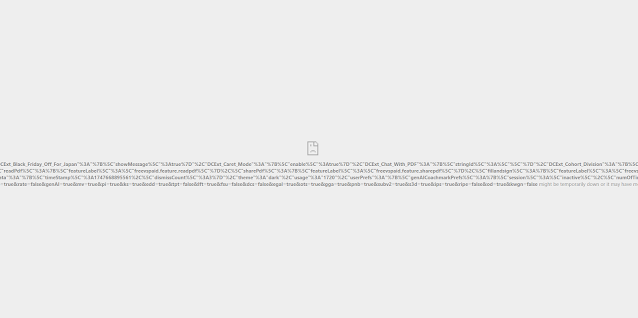"HKEY_LOCAL_MACHINE\SOFTWARE\Policies\Microsoft\Windows"
Now make another new Key under WindowsUpdate call it AU
- Name the new key NoAutoUpdate and press Enter.
Double-click the NoAutoUpdate key and change its value from 0 to 1.
Right-click the newly created key, select the New submenu, and choose Key and name the new key AU and press Enter

Right-click the AU key, select New and select the DWORD (32-bit) Value and name the new key AUOptions.
- 2 — Notify for download and auto install.
- 3 — Auto download and notify for install.
- 4 — Auto download and schedule the install.
- 5 — Allow local admin to choose settings.
- 7 — Auto Download, Notify to install, Notify to Restart.
- These options are the same as the Group Policy settings, and option 2 is the closest to disable Windows Update permanently.
That is it your system should no longer receive windows updates. I will be posting a script to apply this shortly. In the mean time I have also produced a video if you want to see the full process https://youtu.be/Iyx1jkMZYKY







